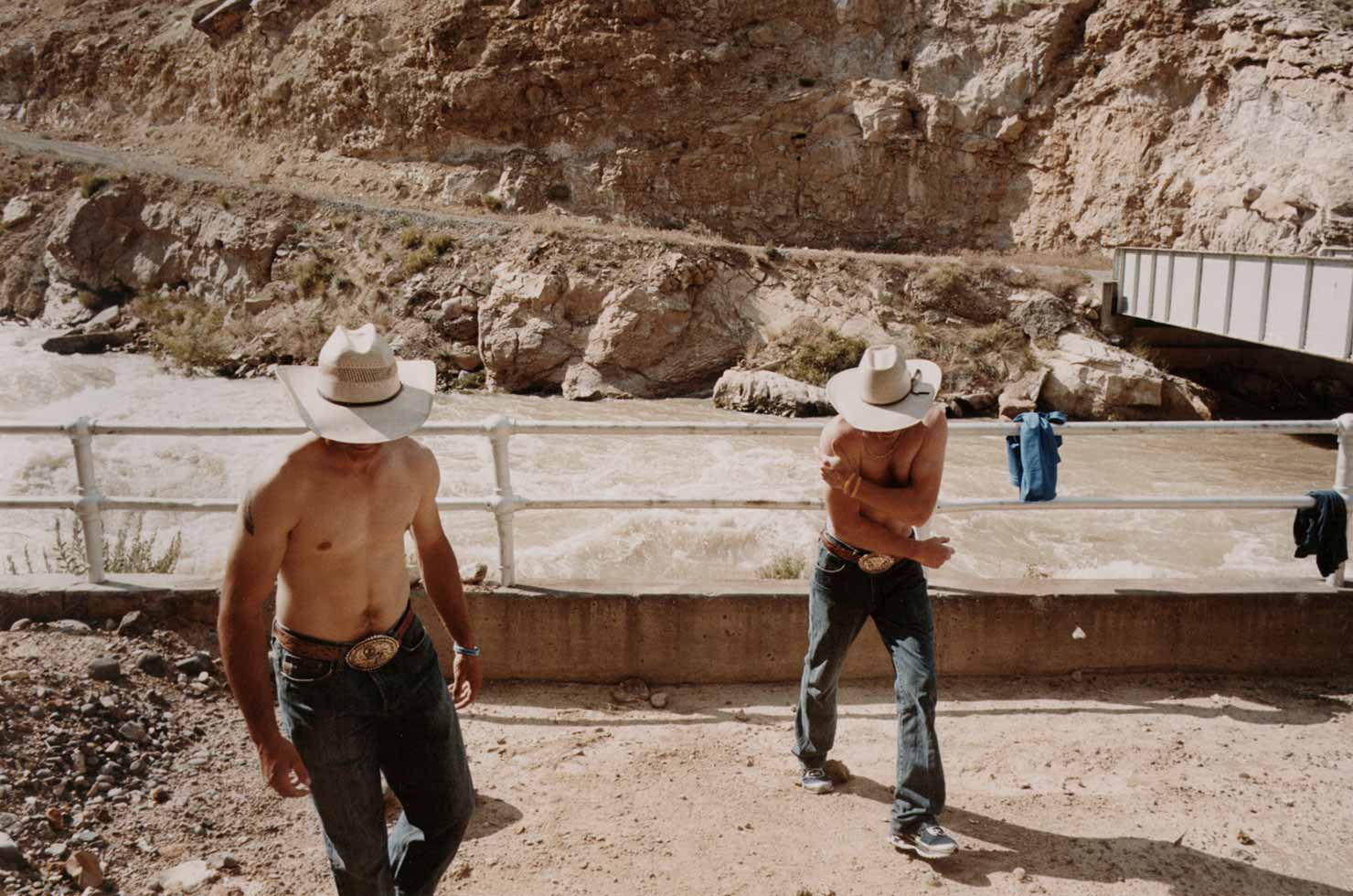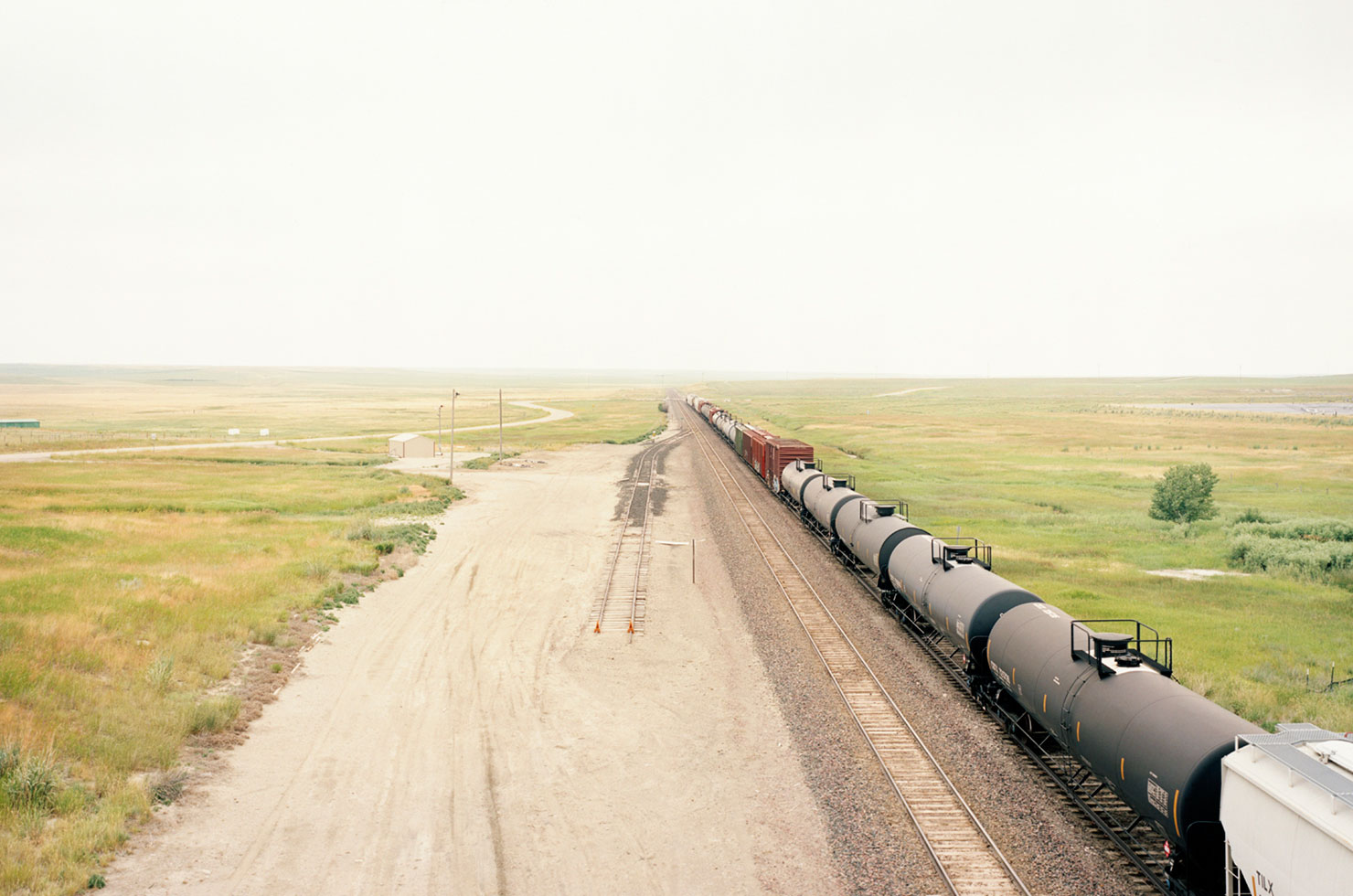Tim Richmond
Places, like people, can seem alone, filled with melancholy. So reads the epigraph to Tim Richmond’s mesmerizing new collection of photographs, Last Best Hiding Place (Kehrer). In it, the author achieves an astonishing personification of some of the American West’s most solitary and desolate places: ghost towns where the ghosts haunt in broad daylight. These are human ghosts; no picturesque buffalo roam in Richmond’s landscapes (in fact, no animals are pictured at all).
Here, we see the ghost of rugged cowboys’ past, now a weathered old man still standing tall; there, the modern analog of Gunsmoke’s pretty Miss Kitty, updated with a tattoo sleeve and a Budweiser sign. The un-peopled landscapes of this book, no less than its human subjects, are bound to take root in your memory long after you’re done leafing its pages and closing the cover.
Read our interview with the artist to rediscover the lure of the American West, and how it made a drifter out of him - and order your copy of the limited Special Edition of 100 on the book shop page of timrichmond.co.uk.
Julia: You are from England; the iconography of these images is uniquely American. Or is it? What is universal about the American West?
Tim: The iconography is very American indeed. Signage is such a key component of the American landscape, passed down through the ages by photographers from Walker Evans, William Eggleston, Joel Sternfeld. I was adding to that list in the contemporary setting, where soap adverts have been replaced by Meth warning billboards, and religious slogans.
What first intrigued you about the American West, and when?
I was first grabbed by the notion of the American West whilst a teenager in England watching films such as Hud, Junior Bonner, and Bad Day at Black Rock, as well as a diet of Westerns from Shane to High Noon. These films conveyed a landscape with no end, combined with a sense of isolation, invention or re-invention and self-reliance. There also was an implication of “freedom”, to exist, to roam, to be with nature.
Your work is often described as cinematic. Was there one film in particular that had an impact on you as an artist?
Five Easy Pieces (1970) directed by Bob Rafelson, with Jack Nicholson and Karen Black bouncing off each other in spectacular form. I loved the iconography of the oil rigs, motels, bowling alleys, and landscapes, as well as the open ended final scene. I wanted to explore that long distant exotic world.
Had you explored American Western imagery previously, in your fashion photography? And did that play a part in conceiving this book project?
I had photographed in the USA prior to this project, but mostly I had been on the East or West coasts. What truly fascinated me more, however, was that vast expanse of the flyover states: the hinterland. I was drawn to the small towns that have survived in the face of reduced populations from their 1950’s high point. The buildings and streets, walking round the corner and finding a scene that blew me away, all appeared incredibly filmic to me. Add to that the people I photographed, and there was a mixing bowl of stories revealed, true or imagined.
When did you decide to undertake this book project?
I was commissioned to shoot a large piece on the rodeo in 2007, and whilst staying on out there, realized that, however attractive the rodeo seemed, it was a ‘show’ around the myth of the cowboy, and for the rodeo weekend the crowd swapped their generic baseball caps for a cowboy hat. What set me off on the path of this book, was the life in the towns and surrounding landscapes after “the circus has left town.”
How did you travel; Was the project done in one trip or several trips; and how long did it take to complete from concept to publication?
I spent seven summers out West, between 2007 and 2014. I was based in Wyoming, and would take several long trips each summer by car/campervan, sometimes with my wife, but mostly alone. After the trip in 2014, I knew that I had completed the material for the book, and started to work with the designer and publisher over the next nine months to create Last Best Hiding Place.
How did you determine where you’d go to find subjects to photograph?
I pored over detailed road maps, took back roads, followed the railway lines (as that would have been the town’s lifeline once), and mostly avoided the interstates. I looked at the remote areas and the distance between each little town. The powerful lure of a name drew me in many times, and made me intensely curious: Harlem, Montana…Pray, Montana… Eureka, Utah… Scenic, South Dakota.
How long did you stay in one place?
That depended on the place. Mostly I would drift through places once I felt that I had exhausted the photographic possibilities. Sometimes that was after a few days. I especially liked the town of Butte, Montana, and was there three days; in others, an hour or two.
The title of your book is “Last Best Hiding Place.” Please explain the concept of hidden-ness as it relates to this project and your work in general?
“Last Best Hiding Place” is a Montanan phrase for living under the radar. I liked the expression, suggesting people and places could exist away from the gaze of CCTV cameras, where there was a sense of stepping away from corporate structures.
I have long had an interest in the hidden, and equally I use devices such as reflections and windows to slightly obscure the view/person, and muddle/blend it/them with the reflected scenery. I also have people looking away from the camera, not at the lens, so there is, I believe, an implied objectivity, and one can apply meaning/stories to that person more readily than to a direct gaze at the lens.
Many of these photographs are quite haunting. Is there one figure or landscape in particular that got under your skin, that you can’t stop thinking about since you completed the project?
There is a certain melancholy that pervades the series, whether it be a person or a landscape, that greatly appeals to me. I see the people and places as quiet, and in their own space. I wonder whether, in this era of the “all smiling selfie,” we are becoming trained to expect photographs of people to be an attention-grabbing performance.
Did you pause to hear your subjects’ stories while you photographed them? Or did you prefer to maintain a certain distance from them (to hide from them, as it were)?
There was no set pattern, but generally I got some stories from the subjects—some in-depth, others more fleeting—but doing the road trips I became used to the rhythm of the day, making hundreds of tiny decisions about what worked and what did not.
What do you hope that readers/viewers will take away from these images?
I feel that a photographer should show the everyday and overlooked, and find a certain beauty there. I would like that viewers bring their own backstories to the images. I would hope that they share my love for the everyday, beautiful, barren, harsh environment of the American West that is steeped in cinematic imagery, and that they see a side to the West that is so much more complex and intriguing than the stereotypes, such as a silhouette of a lonesome cowboy and horse on a hilltop.
This issue is about nature. What insights into nature did you discover working on your book project?
The American West without doubt teaches one to respect nature, and to respect nature’s power. Bitterly cold winters, and then very hot summers triggering torrential storms, make one only admire even more those who have chosen to settle there. The scale of the landscape is phenomenal. Taking a dirt back road, you could easily be driving two hours without seeing another human soul, just some cattle or horses as company, along with a soundtrack of continuous country music on the car radio.







